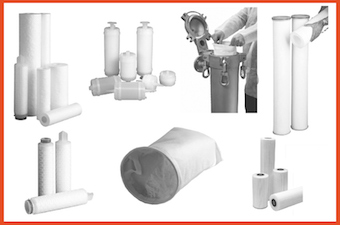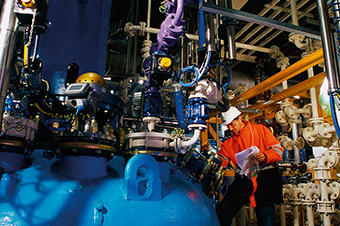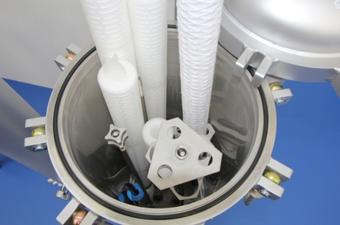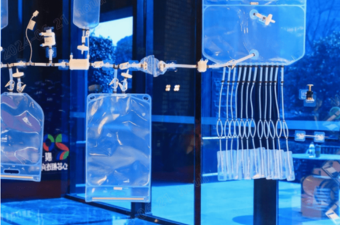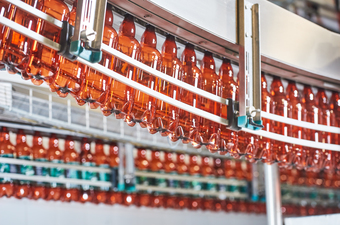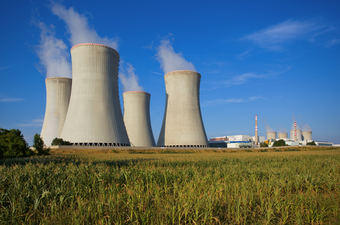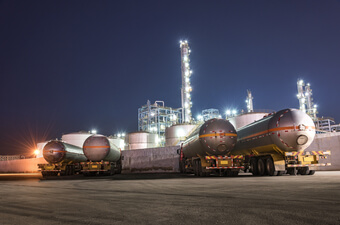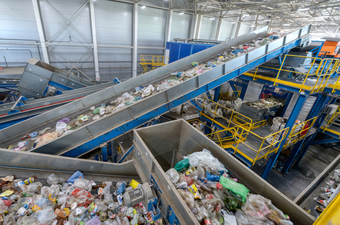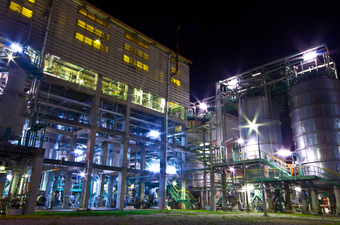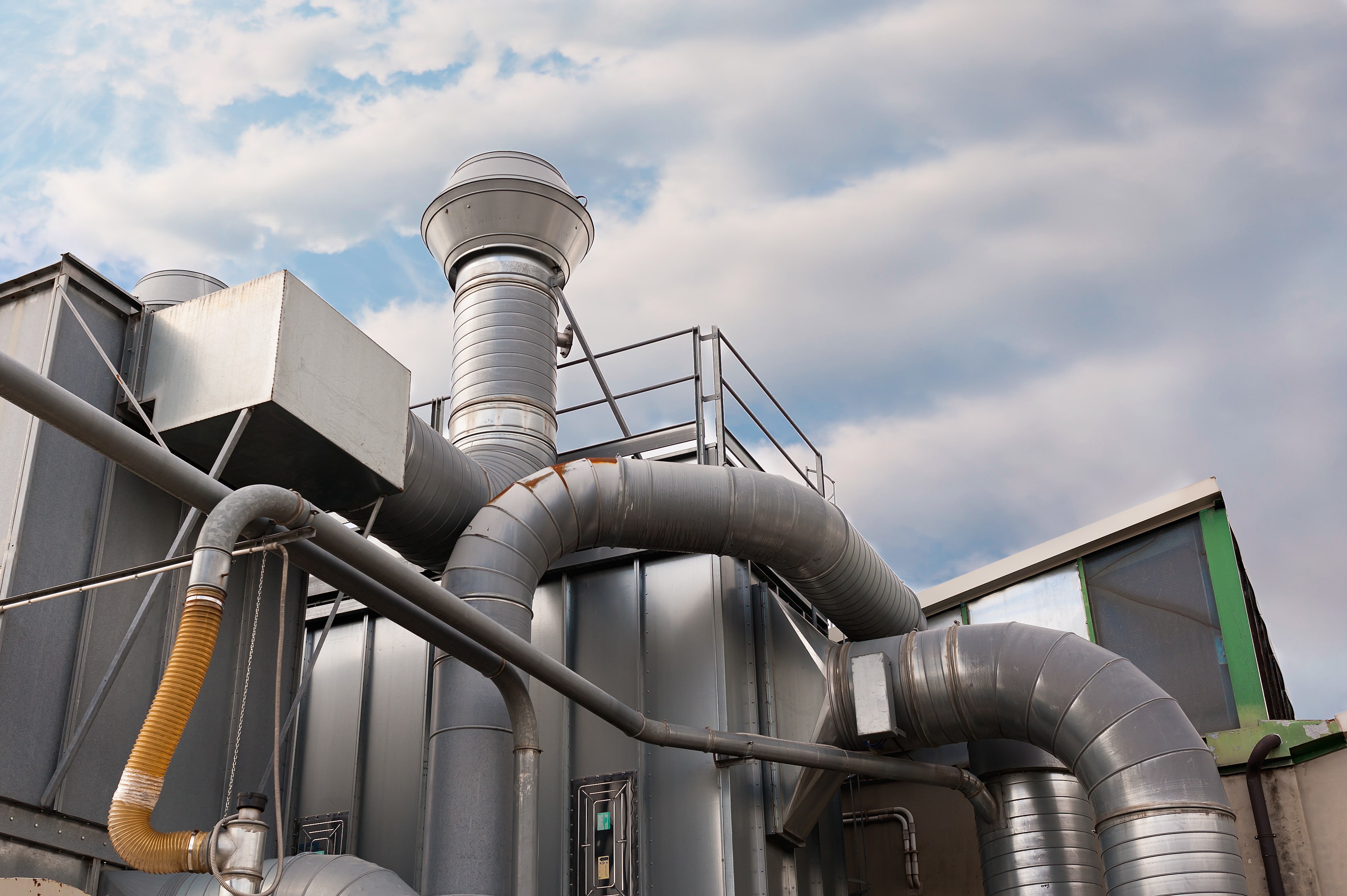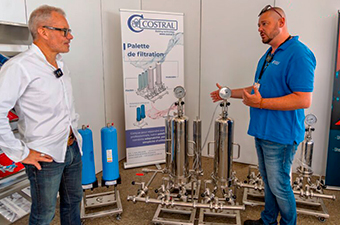Glossary of industrial filtration
Adhesion of molecules, atoms and ionised types of gas or liquid to the surface of another substance (solid or liquid) produced by a variety of weak forces. A common adsorbent substance is activated carbon, which is very often used in filters integrated into a filtration process.
Standardised dust with a perfectly classified particle size distribution. Generally used for filtration efficiency tests. In air filtration, its use is not recommended in favour of other standards such as ISO, ASHRAE, etc.
Granular or fibrous product introduced at the start of and during the filtration cycle, which is deposited on the filter media to form a microporous pre-coat (also known as a cake).
Synthetic dust used to load air filters in laboratory tests (ASHRAE Standard 52).
Sterilisation technique using pressurised saturated steam or superheated water. The heat, combined with the humidity, destroys the germs. For equipment to be considered sterile, the theoretical probability of isolating a germ must be less than 1%. This is the Sterility Assurance Level (SAL) regulated by standard EN 556.
Chemical or physical agent with the ability to kill bacteria.
Periodic cleaning and/or unclogging process by reversing the flow through a filter
Method of regenerating and/or unclogging a filter by forcing a cleaning fluid to pass in the opposite direction to that of filtration.
Chemical or physical agent that kills micro-organisms
A layer of microorganisms, embedded in a solid matrix, adhering to each other and/or to surfaces. The integration of pathogenic organisms into biofilms can protect them from the action of biocides, even at high concentrations, which would otherwise have destroyed or inactivated them.
Biofouling is the formation of a disruptive layer of living organisms on an artificial surface in constant or frequent contact with water.
Cleaning process and/or method to break the filter cake by passing compressed air in the reverse direction of filtration.
Operation consisting of passing a filter media between two cylinders (the calender) to modify its surfaces.
Total concentration of carbon present in organic compounds.
Product that promotes or triggers a chemical reaction
Computer programmes and calculations to solve fluid flow problems on complex geometries.
This is a measure of the concentration of micro-organisms in a given volume. A measure of viable microbial populations.
A highly porous form of carbon used to absorb organic compounds, in particular to reduce or eliminate chlorine levels. Many filter cartridges are made from activated carbon.
The bacterial challenge is a logarithmic reduction value (LRV) that measures the effectiveness of filters in removing microorganisms from a given suspension. LRV (Log Reduction Value) = LOG₁₀ (Number of upstream organisms / Number of organisms in the filtrate). To be classified as a sterilizing filter, the logarithmic reduction must be greater than 7: LRV > 7.0.
Adsorption phenomenon whose mechanism is explained by chemical interactions. Electrons are shared between the surface atoms of the solid and the fluid molecules, which are thereby activated.
A stable dispersion of fine particles in water, generally smaller than 0.1 μm. Colloids containing iron, aluminum, silica, and organic compounds are frequently present in natural and drinking water.
Phenomenon in which two dispersed fluids tend to come together and merge.
Gradual blockage of a filter media's openings.
It counts particles in an electrolyte and measures their volume by detecting changes in the electrolyte's conductivity caused by the displacement of the conductive volume inside a capillary through which the particles pass.
The mass of a phase within a unit volume of a mixture. There are several ways to express a concentration: mass fraction (mass of solids relative to total mass), mass ratio (mass of solids to mass of liquid), void ratio (volume of voids to volume of solids), volume fraction (volume of solids to total volume), and volume ratio (volume of solids to volume of liquid). Units such as ppm and ppb should be avoided due to ambiguity.
Volatile Organic Compounds (VOCs) are gases and vapors that contain carbon, such as gasoline and solvent vapors.
Involves measuring the airflow rate through the water-filled pores of a wetted membrane, following Fick's law of diffusion. Maximum acceptable diffusion specifications have been established for each membrane and are used to predict bacterial retention test results.
Graph or table showing the frequency of particles within selected size ranges. It is usually determined using a particle counter.
Similar to particle size distribution, this describes the distribution of pores with specified sizes. This affects filtration performance, as the ratio between pore size and particle size influences clogging and bridging. It can be measured using a porometer.
Hardening of metal resulting from cold deformation.
The term « absolute » is used to define a filter element whose filtration efficiency at the specified threshold is greater than 99.98%.
The term « nominal » is used to define a filter element whose filtration efficiency at the specified threshold is approximately 90.00%.
Dispersion of one liquid into another when these two liquids are immiscible.
Process of removing surface oxides formed during various metal processing operations, such as heat treatments, welding, etc.
The Brix scale is used to measure, in degrees Brix (°B or °Bx), the sucrose fraction in a liquid, which corresponds to the percentage of soluble dry matter. The higher the °Brix, the sweeter the sample.
One degree Brix is equivalent to 1 gram of sucrose per 100 grams of solution.
The primary application is in fruit measurement, particularly in viticulture, but it is also used in jams, confectionery, and other food products (beverages).
Toxin contained within a microorganism (bacterium) that remains inside the cytoplasm instead of diffusing outside (opposite of exotoxin).
Thread running in the lengthwise direction of a fabric.
Thread perpendicular to the warp thread.
A purification process in which the passage of a fluid through a porous material results in the removal of impurities.
Filtration is considered classifying when the retention spectrum is very fine in terms of particle sizes.
Filtration is considered dead-end when the direction of the fluid to be filtered is perpendicular to the surface of the filter.
Filtration is considered clarifying when the retention spectrum is very broad in terms of particle sizes.
Filtration is considered crossflow when the fluid flows tangentially to the surface of the filter.
Filtration is considered sterilizing if it meets the bacterial challenge test. For more details, refer to:
- ASTM F838-05 supersedes HIMA Document No.3 Vol.4, April 1982, « Microbial Evaluation of Filters for Sterilising Liquids »
- FDA Guidance for Industry: Sterile Drug Products, Produced by Aseptic Processing - Current Good Manufacturing Practice, September 2004
- US Parenteral Drug Association (PDA), Technical Report 40, Sterilizing Filtration of Gases, 2005.
- US Parenteral Drug Association (PDA), Technical Report 26, Sterilizing Filtration of Liquids, 2008.
- The Rules Governing Medicinal Products in the European Union, Volume 4, EU Guidelines to Good Manufacturing Practice, Medicinal Products for Human and Veterinary Use, Annex 1 - Manufacture of Sterile Medicinal Products, 2008.
A fluid that obeys Newton's law of viscosity. It exhibits a linear proportionality between shear stress and shear rate. The proportionality constant is the viscosity.
A fluid whose viscosity varies with the shear rate. It does not obey Newton's law of viscosity.
Airflow directed in a specific direction at a constant velocity.
Having a strong affinity for water. It attracts, dissolves in, or absorbs water.
HEPA stands for High Efficiency Particulate Air. The HEPA designation applies to any device capable of filtering at least 99.97% of particles with a diameter equal to or greater than 0.3 µm in a single pass.
The ability of a substance to attract and retain water.
The Minimum Efficiency Reporting Value within specified particle size ranges during testing (ASHRAE 52.2-2007).
In particle size analysis is an American standard for measuring sieve mesh size. Mesh measurement is an inverse scale: the mesh value decreases as the mesh size increases.
Any organism too small to be seen with the naked eye, such as bacteria, viruses, molds, yeast, protozoa, and certain fungi and algae.
A single, continuous fiber, usually made of synthetic material.
The most penetrating particle size. Corresponds to the maximum diameter of particles that can pass through the filter media.
Having a strong repulsion for water; repelling water.
A thread made from multiple twisted fibers, usually in a synthetic material.
Having an affinity for oils.
Having a strong repulsion for oils; repelling oils.
Discrete quantities of solid matter dispersed in water.
Surface treatment that enhances metal corrosion resistance by creating a protective surface film.
Defined as the average airflow rate passing through a unit surface area under a unit pressure difference in a unit of time, under specified conditions.
Pressure drop represents the energy losses of a fluid flowing through a system (corresponding to a loss of pressure within the system). These losses are primarily due to the viscosity of the fluid, as well as the nature and geometry of the system.
Total mass of suspended particles with a diameter smaller than 1 μm, 2.5 μm, and 10 μm in 1 m³ of air.
The differential gas pressure required to produce the first bubble from the pores of a submerged horizontal filter media.
The dew point, or dew temperature, is the temperature at which the water vapor in the ambient air condenses into liquid water at a given pressure. The higher the humidity of the gas, the higher the dew point (in °C).
In other words, the dew point is the temperature to which a volume of air must be cooled, at constant pressure and absolute humidity, for it to become saturated.
A device used to measure the pore volume and, therefore, the porosity of a filter media. Often (incorrectly) used as a term to describe a porometer.
A distribution point in a purified water system from which water can be drawn.
Porosity corresponds to the volume of pores relative to the total volume of the material. It is essentially the volume of « void » per unit of volume.
Part Per Million, Billion, Trillion. A part per million, billion, or trillion is a way to express concentrations and proportions in general.
Filter cake formed by the filtration aid.
A number representing a metal's resistance to pitting corrosion. The higher the number, the more resistant the metal is.
The physical unit calculated as force per unit area.
The pressure loss in a fluid flowing through an obstacle, such as a filter media.
A category of substances, including bacterial endotoxins, that can induce fever when injected or infused.
Heat treatment aimed at eliminating the effects of work hardening.
Particle size distribution refers to the proportion of particles of different sizes within a given sample. It is a critical parameter in filtration, determining the efficiency of a filter medium in retaining or allowing the passage of particles based on their size.
A weaving technique that allows for extremely fine filtration thresholds.
Electrical resistance between opposite faces of a one-cubic-centimeter sample of a given material at a specified temperature. Resistivity is the reciprocal of conductivity. In water analysis, resistivity is typically reported in megaohm-centimeters (MΩ-cm) and corrected to the value at 25 °C.
A cleanroom is an environment with a low level of environmental pollutants (such as dust, airborne microbes, aerosol particles, and chemical vapors). A cleanroom has a contamination control level specified by the number of particles per cubic meter at a given particle size.
The study of the flow and deformation properties of matter, such as elasticity, plasticity, and viscosity, under the influence of an applied stress.
A form of corrosion that occurs in halogenated environments when metal is subjected to tensile stress. High nickel content promotes this type of corrosion.
Refers to the size of a particle or a specific organism that is retained by the filter media with a specified level of efficiency.
The amount of solid remaining after heating at 110°C for two hours. It is usually expressed as a weight percentage. Conversely, it is referred to as the Moisture Content.
When sterilization is achieved by water heated above 90°C and maintained in contact for a given cycle (typically more than 30 minutes).
When sterilization is achieved by steam pressure (temperature equal to or greater than 121°C) and maintained in contact for a given cycle (typically more than 30 minutes).
Defined as a tensile force acting on the surface of a liquid, always tending to minimize its volume. It is typically expressed in dyne/cm.
When sterilization is achieved using chemical agents. Commonly used chemicals include peracetic acid, hydrogen peroxide, and sodium hypochlorite.
Measurement of an air filter's efficiency in retaining airborne particles, based on the retention of dioctyl phthalate (DOP) aerosol droplets calibrated at 0.3 µm, according to ASTM D 2986-71. It is generally expressed as a percentage.
Destruction or elimination of all living microorganisms.
Metric system of units describing the linear density of a fiber. 1 tex = weight in grams of 1000 m of fiber. 1 decitex (dtex) = weight in grams of 10,000 m of fiber.
A fluid or material is said to be thixotropic if, under constant stress (or shear rate), its apparent viscosity changes over time.
The degree of cloudiness of a liquid caused by the presence of suspended particles or colloidal matter. Turbidity reduces light transmission and is measured in Nephelometric Turbidity Units (NTU).
Stands for Ultra Low Particulate Air. The ULPA designation applies to any device capable of filtering at least 99.9995% of particles with a diameter equal to or greater than 0.3 µm in a single pass.
A quantification of endotoxin levels relative to a specific amount of reference endotoxin. 1 EU/ml is approximately equal to 0.1 ng/ml.
A test, generally non-destructive, used to demonstrate the performance of a filter, primarily its ability to meet the bacterial challenge. The most commonly used methods include diffusion flow measurement, bubble point determination, and water intrusion testing.
The name given to a fluid dynamics phenomenon where a pressure drop occurs in a region where fluid particles are accelerated.
Characteristic of a fluid that resists dissociative forces and motion. This property is strongly associated with pressure drop and energy dissipation.
The validation process (in the pharmaceutical sense) aims to confirm a procedure, process, method, or approach. The standard approach is called the 4Q model (DQ: Design Qualification, IQ: Installation Qualification, OQ: Operational Qualification, PQ: Performance Qualification).

















